Understanding your customers is essential. Customer needs, customer behavior, customer engagement — it’s all essential to building a winning brand.
That’s where customer analysis comes in.
What is Customer Analysis?
This involves examining and analyzing your customers from all angles and using that data to gain insight into their:
- Needs
- Experience
- Behaviors
- Characteristics
- Tendencies
- Preferences
- Pain points
- Objectives
The end goal of customer analysis is to use quantitative and qualitative data to fully understand your customer base so you can deliver the best possible experience end-to-end.
From the moment when brand awareness first begins to the moment someone purchases your product and everywhere in between, customer analysis supplies you with objective data so you understand the ins and outs.
In turn, you can make data-driven decisions for every aspect of the customer experience rather than merely relying on speculation or “a hunch.”
Performing customer analysis can be done using a mix of tools and strategies, such as:
- Customer analytics
- CRM platforms
- Direct customer feedback via surveys and interviews
- Market research
- Social media monitoring
- Customer experience analytics
- Customer sentiment analysis
- Customer segmentation analysis
The questions are, “How exactly does customer behavior analysis help your business?” and “How do you go about doing it?”
Let’s find out.
Customer Analysis Benefits
There are three main ways businesses can benefit from using customer analysis.
First, it gives you a holistic understanding of your customer base so you can see the big picture.
You know what’s motivating your customers, what they’re looking for, and how to deliver at every stage of the customer journey.
Whether you’re trying to get potential customers to officially enter your sales funnel, looking to raise customer satisfaction among existing customers, or wanting to increase customer loyalty to maximize customer retention, it all starts with customer analysis.
Next, it helps improve your interactions with customers.
Once you know what makes them tick by understanding their preferences, tendencies, characteristics, and so on, you can communicate more effectively and provide a more satisfying experience.
Your marketing team, for example, could adjust your marketing campaign to ensure they’re reaching out through the right channels. Or, your customer support team could “speak their language” when handling questions or complaints.
Third, you can optimize your products.
As you gain more insight through customer analysis, you can pinpoint strengths and weaknesses. From there, you can make the right adjustments to develop the best possible products with features your customers love and use.
Put all of this together, and it can have a dramatic impact on your business, including boosting customer engagement and satisfaction, raising your Net Promoter Score, lowering customer attrition, maximizing customer lifetime value, and more.
How to Do Effective Customer Analysis
1. Create a Customer Journey Map
One of the best starting points is to use customer data analytics to map out the entire customer journey from start to finish.
For instance, here’s how you can use Woopra’s customer journey analytics to get a detailed overview of how customers start from being first-time visitors to requesting a demo to signing up for a free trial to upgrading to a paid version to ultimately, churning.
 Source: Woopra analytics dashboard
Source: Woopra analytics dashboard
Besides simply knowing what the sequence of steps looks like, you can also see how many people dropped out and how many continued at each stage.
In turn, business analytics like this provides actionable insight into specific areas of the customer journey that need improvement.
Or if you wanted to go more granular, you could examine particular sections of the customer journey like when someone signs up to become a customer.
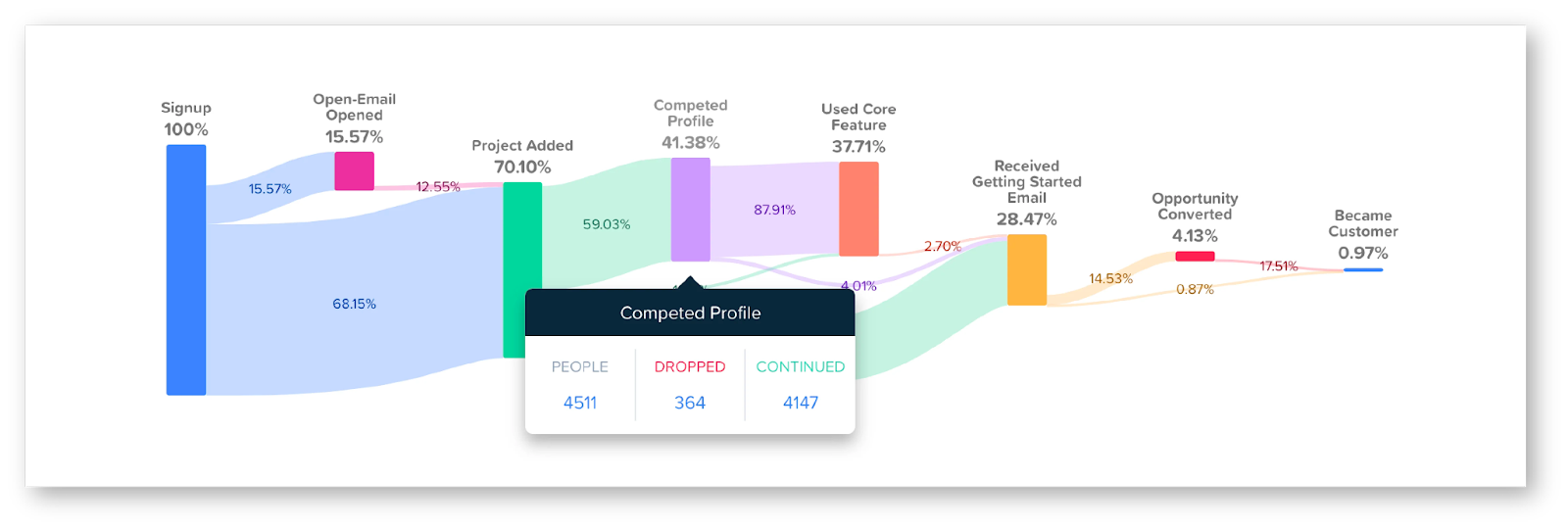 Woopra analytics dashboard
Woopra analytics dashboard
In this example, you can follow this section step-by-step so you can see this leg of the customer journey in detail and use data science to enhance the experience.
The possibilities are endless, and creating these types of maps is perfect for helping get your bearings with customer analysis.
2. Analyze Current Customers Using Customer Analytics
After you’ve done customer journey mapping, the next step we recommend is getting a firm grasp on your existing customers.
- Who are your current customers?
- What are their behaviors?
- What motivates them to buy and stick with you?
- Which factors contribute to a positive existing customer experience?
- What issues are harming the customer experience?
- What’s causing customer churn?
These are just a few questions you can find answers to by leveraging customer analytics platforms like Amplitude, Adobe Analytics, and Woopra. (Google Analytics won’t be quite robust enough for this.)
Here are some examples.
One is to see which advertising mediums lead to the most signups from your marketing effort.
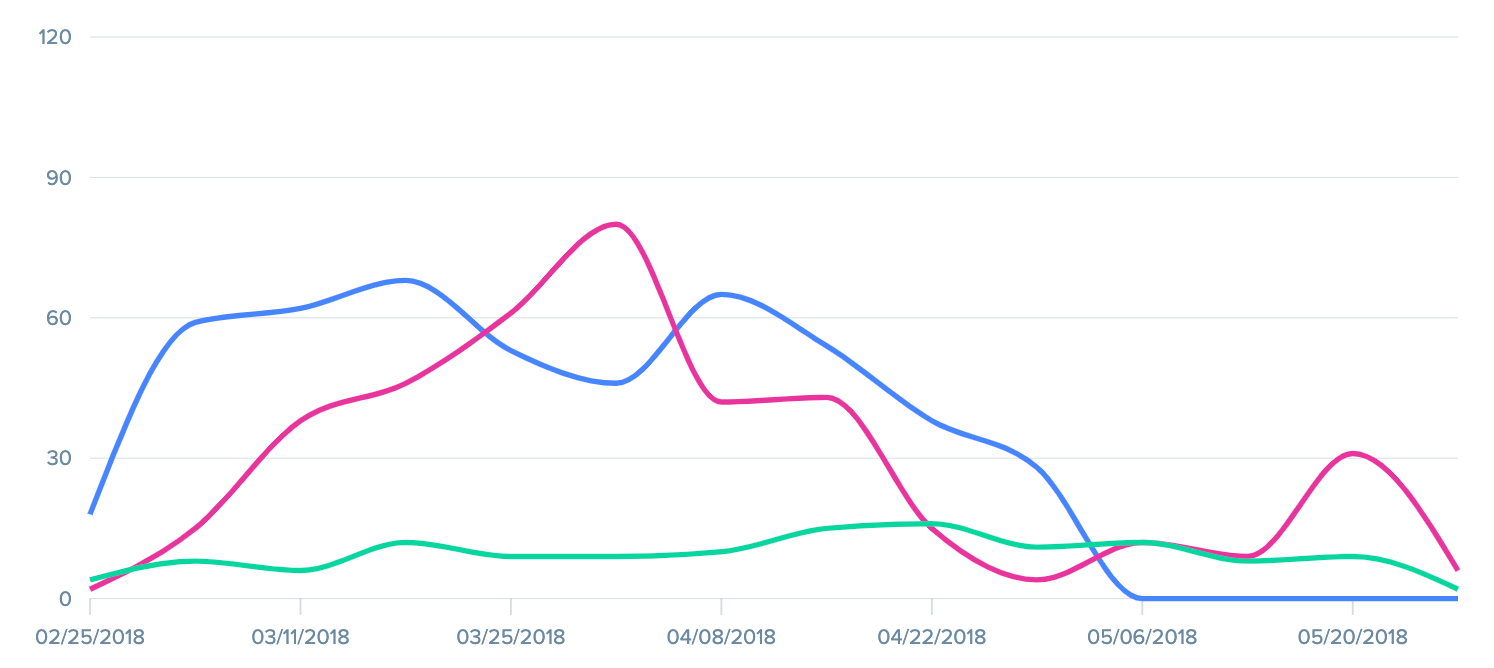 Source: Woopra
Source: Woopra
Another is to measure how many customers return after using a core product feature over time.
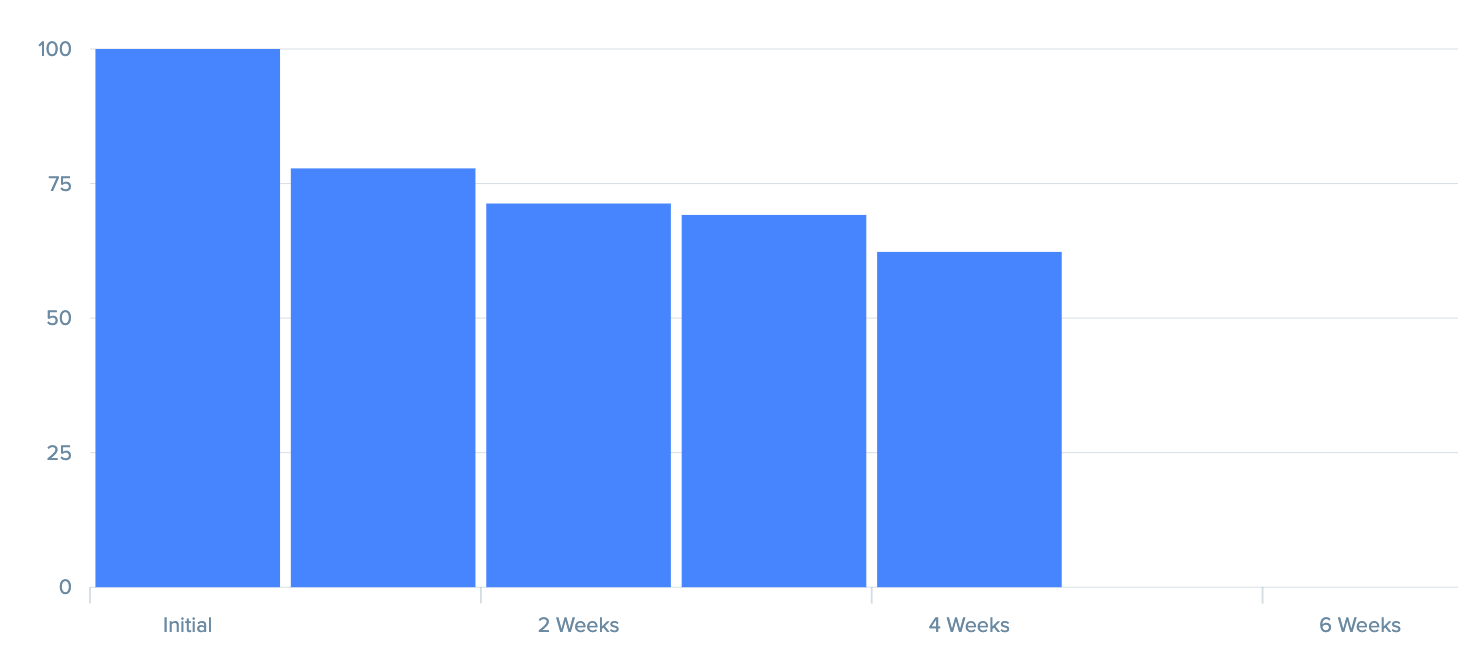 Source: Woopra
Source: Woopra
Another is to look at retention reports to see what customer retention is over time.
 Source: Woopra
Source: Woopra
As you can see, customer data analytics can measure behavior at all stages of the customer journey.
By generating detailed customer data like this, you can gain a clear perspective on what the current customer experience is like so you’ll know how to proceed moving forward and which areas to prioritize.
3. Gather Customer Feedback
Sometimes the simplest customer data is the best data. Therefore, basic customer feedback is something that shouldn’t be overlooked.
After creating a customer journey map and analyzing current customers, you should be able to get a good sense of the customer experience by obtaining feedback through:
- Customer surveys
- Customer interviews
- Feedback forms on your website or email
- Customer support interactions
- Net Promoter Score
For instance, you could ask customers to rate how satisfied they were with a recent experience or how likely they are to recommend your brand to friends or family.
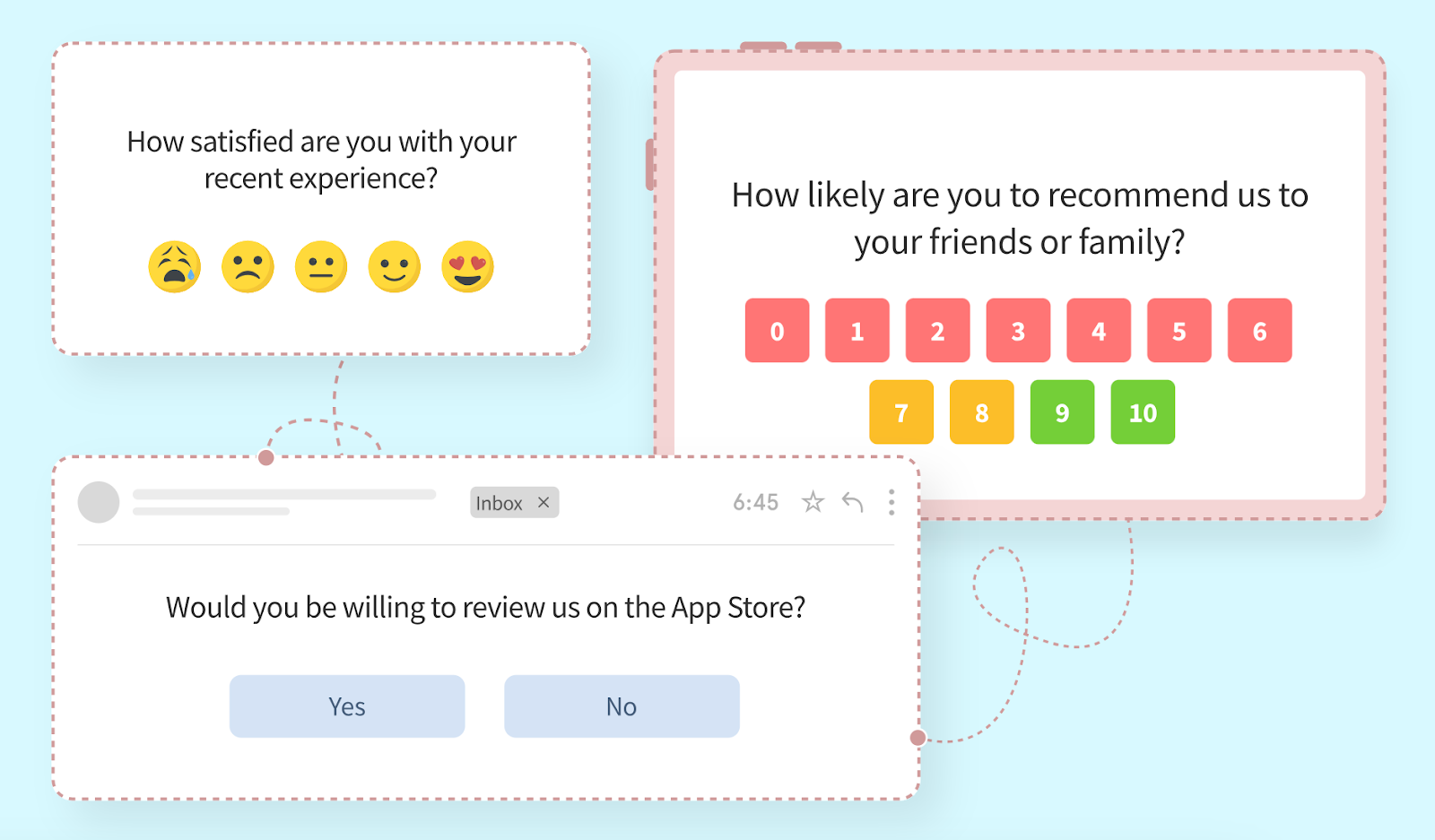 Source: Zonka Feedback
Source: Zonka Feedback
You could ask some of your most highly engaged customers to participate in one-on-one interviews to explain their experience firsthand (offering an incentive like a sizable discount or gift card should increase participation).
Or you could use a Net Promoter Score to determine what percentage of your customers are detractors, passives, and promoters.
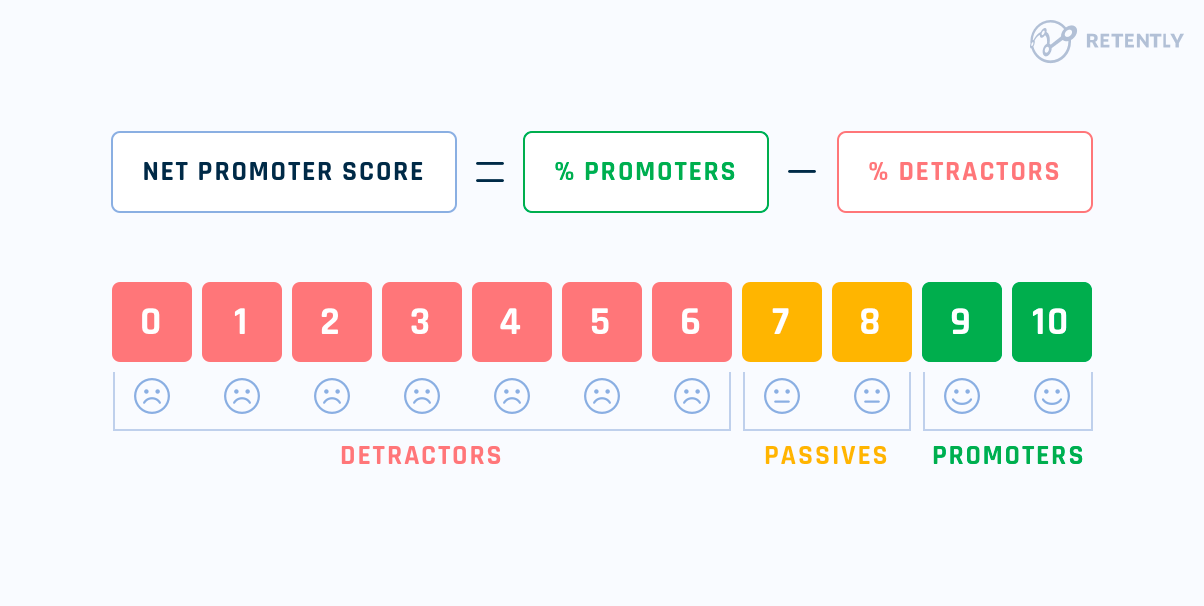 Source: Retently
Source: Retently
By getting direct feedback like this, trends should quickly emerge, and it should supply you with the customer data needed to dramatically improve the customer experience.
4. Measure Customer Sentiment Across Reviews and Social Media
Using the three aforementioned customer analysis strategies should give you a pretty solid understanding of your customers. But you can take it one step further by analyzing their collective sentiment.
There are two main ways to go about this.
One is to read unbiased reviews from real customers to determine what customer sentiment is as a whole and pinpoint specific strengths and weaknesses.
A great resource for finding reviews for business software and services is G2.
Simply enter your company name, and you can find in-depth information on what customers are saying.
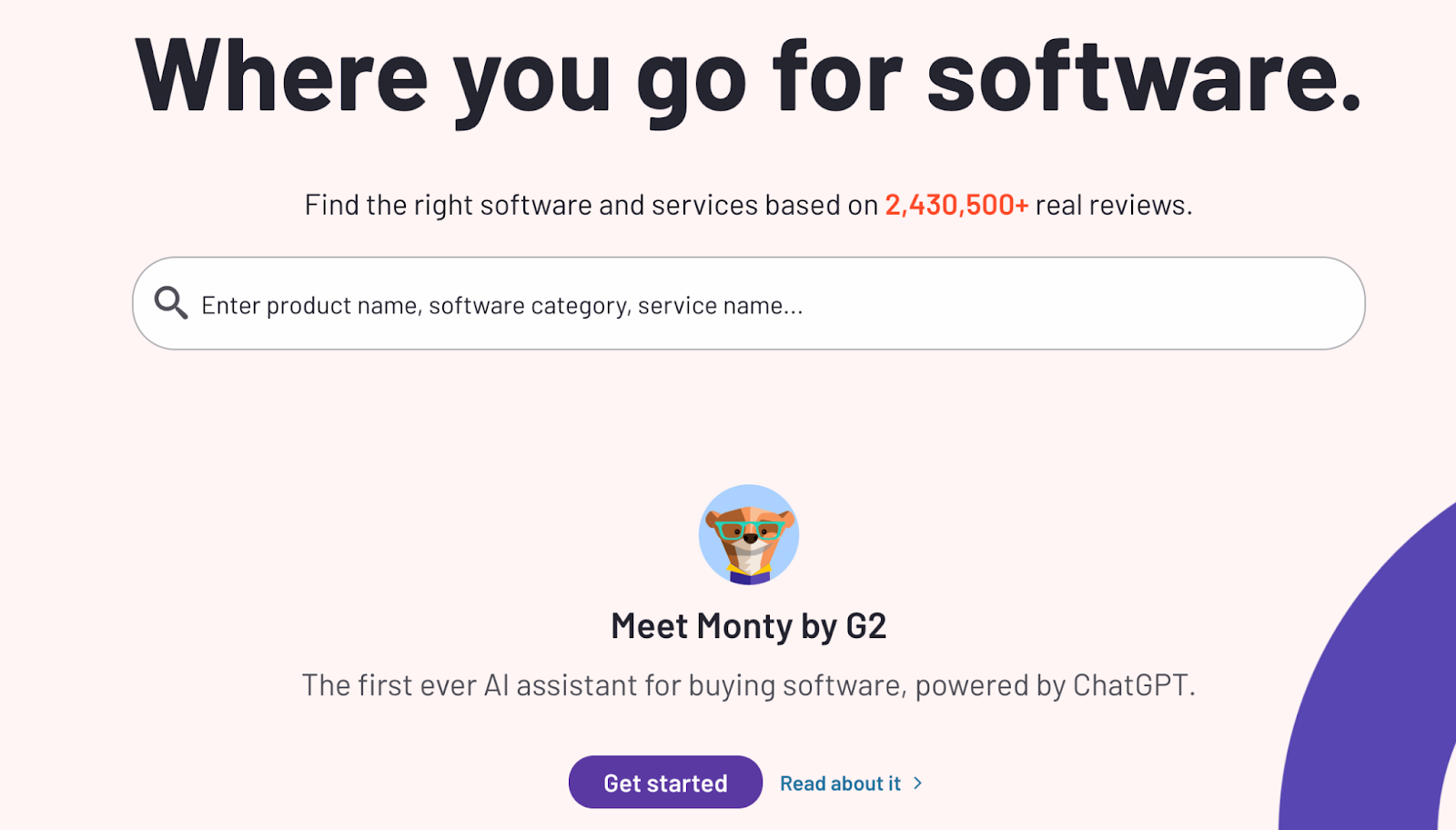 Source: G2
Source: G2
Here’s what Zapier’s G2 review page looks like.
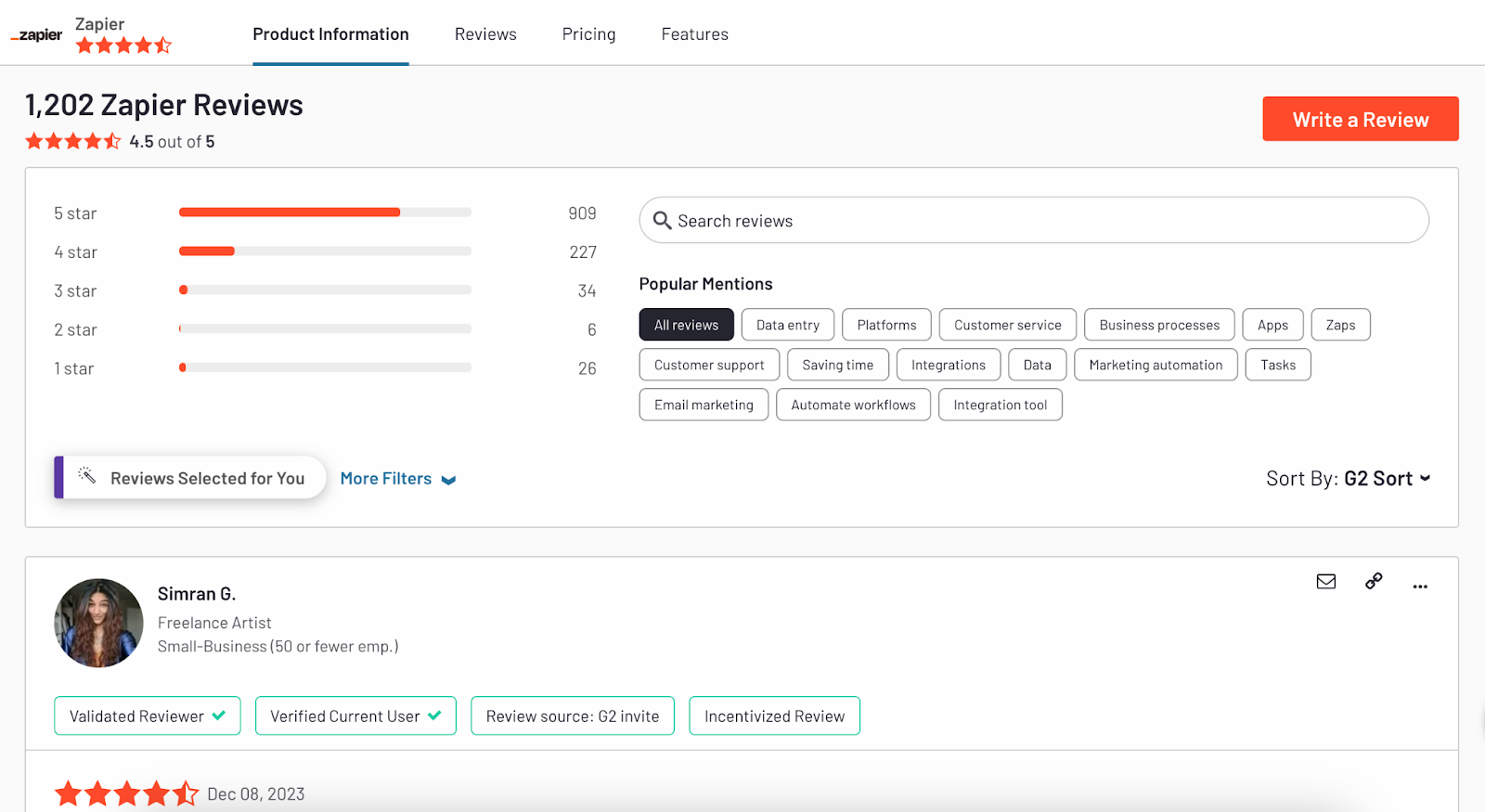 Source: G2
Source: G2
With over 1,200 reviews and a rating, the Zapier team can get a good sense of consumer sentiment.
And by looking at individual reviews, they can see what users like most about the platform or what issues they’ve encountered.
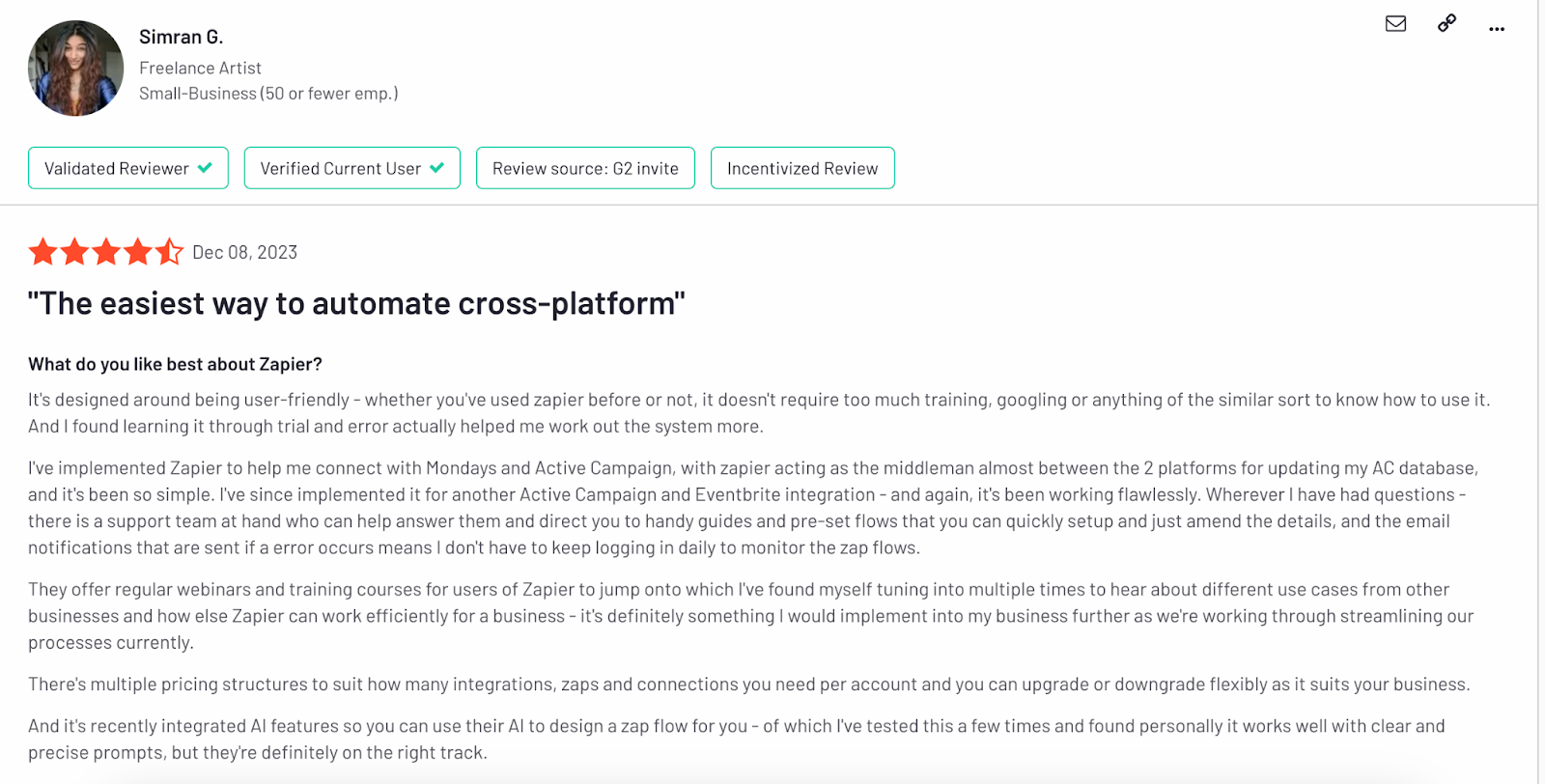 Source: G2
Source: G2
There’s even a handful of videos from Zapier users, which really helps to connect the dots.
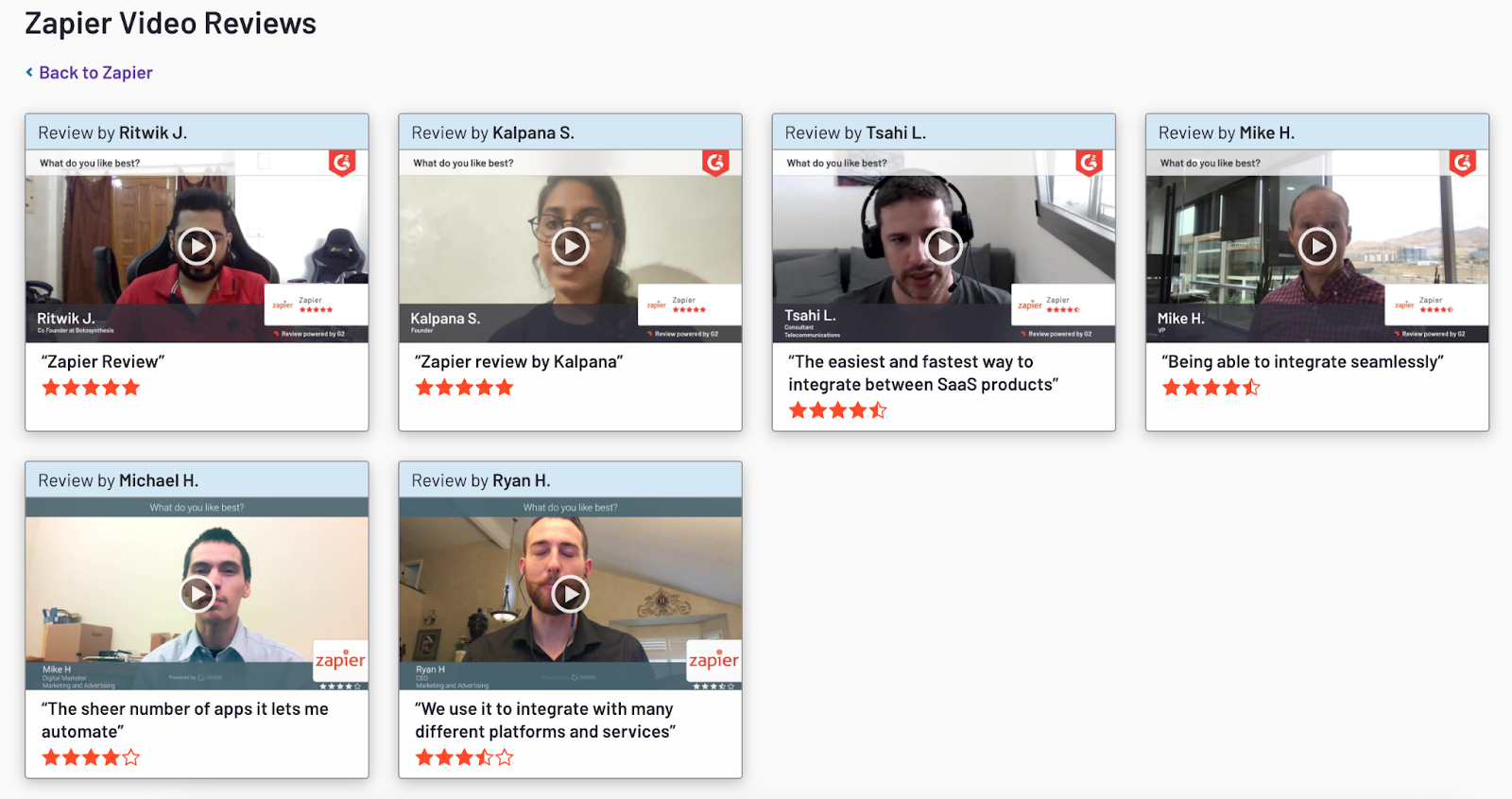 Source: G2
Source: G2
Besides that, you can use social listening tools like Brandwatch to monitor brand mention volume,…
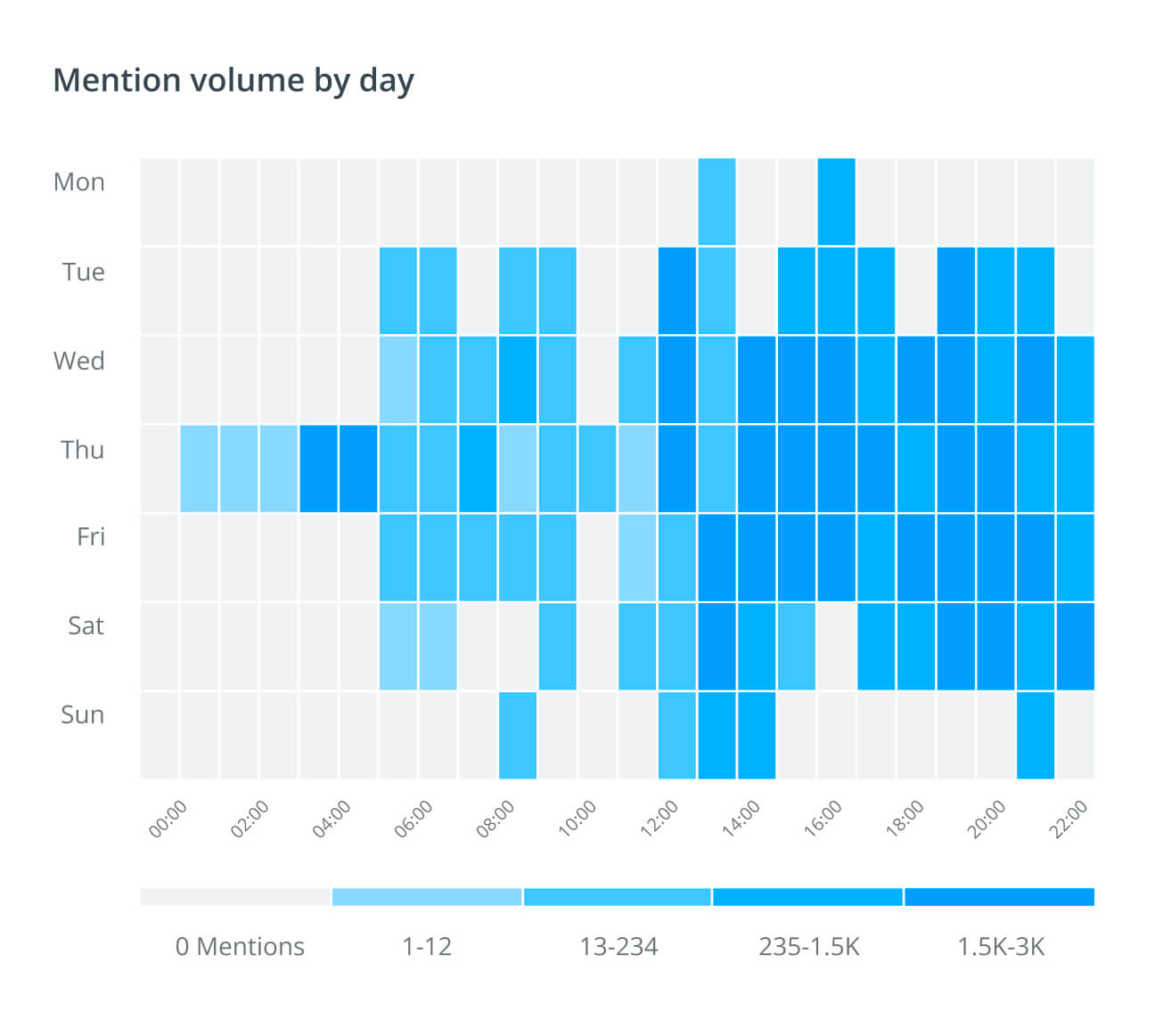 Source: Brandwatch
Source: Brandwatch
… sentiment, and more.
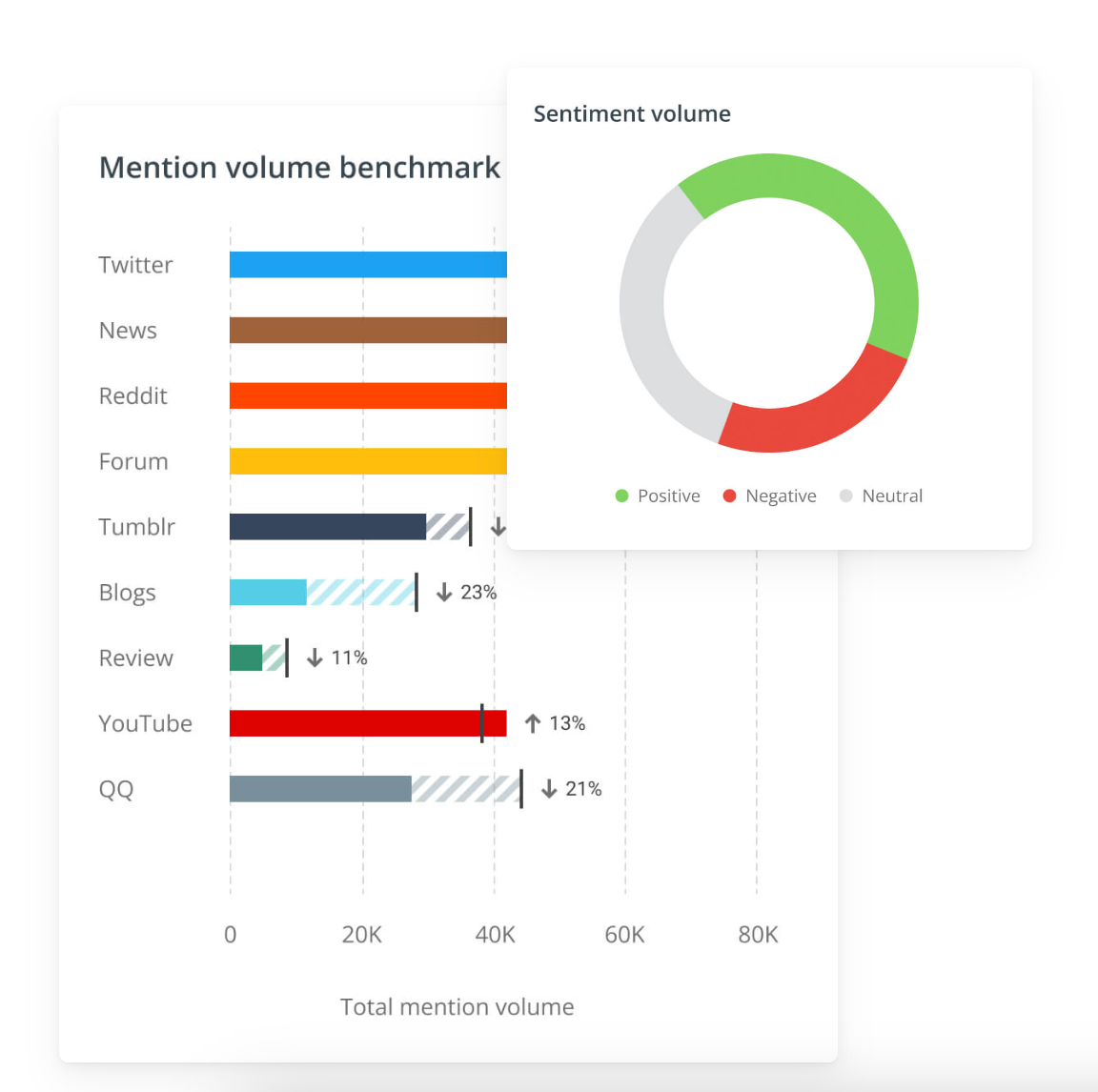 Source: Brandwatch
Source: Brandwatch
If you’re looking for detailed customer sentiment analysis and want to hear it straight from the horse’s mouth, these are excellent tools to use.
In addition to painting an unbiased picture of what your customers think about your brand, you can also track overall growth.
5. Collect Customer Profile Data
Most brands will have multiple customer personas.
As HubSpot explains, “Depending on your business, you could have as few as one or two personas or as many as 10 or 20,” with each representing a specific target customer segment.
The more fleshed-out your customer profiling becomes, the better able you’ll be to put yourself in your customers’ shoes and envision them as real people rather than as merely abstract concepts.
This is also instrumental for customer segmentation, as the data you generate should help you neatly segment customers into different groups.
To accomplish this, you’ll want to collect customer profile data and use it to create two or more personas based on things like:
- Demographic information - Age, gender, role within a company, location, etc.
- Behavioral information - Product usage, purchase frequency, features used, and interactions
- Needs and pain points - Specific issues they’re having using your product
Here are some other types of information you may have on your customer base that can be helpful for creating customer personas.
 Source: HubSpot
Source: HubSpot
The more customer data you use, the more clear each buyer persona should become, and the deeper understanding you should have of your audience. Further, this data can spill over to customer segmentation for an added plus.
6, Forecast Future Customer Behavior
Besides using data to analyze what’s happened in the past and what’s happening currently with customers, it’s equally important to forecast future behavior.
Doing so enables you to better anticipate customer needs and take measures to ensure you effectively meet those needs to attain high customer satisfaction — something you can do by using predictive analytics.
Say, for example, you wanted to predict how long users will engage with a new product release before engagement slows down.
You could use a trends analytics report to track product engagement from a prior product release over time.
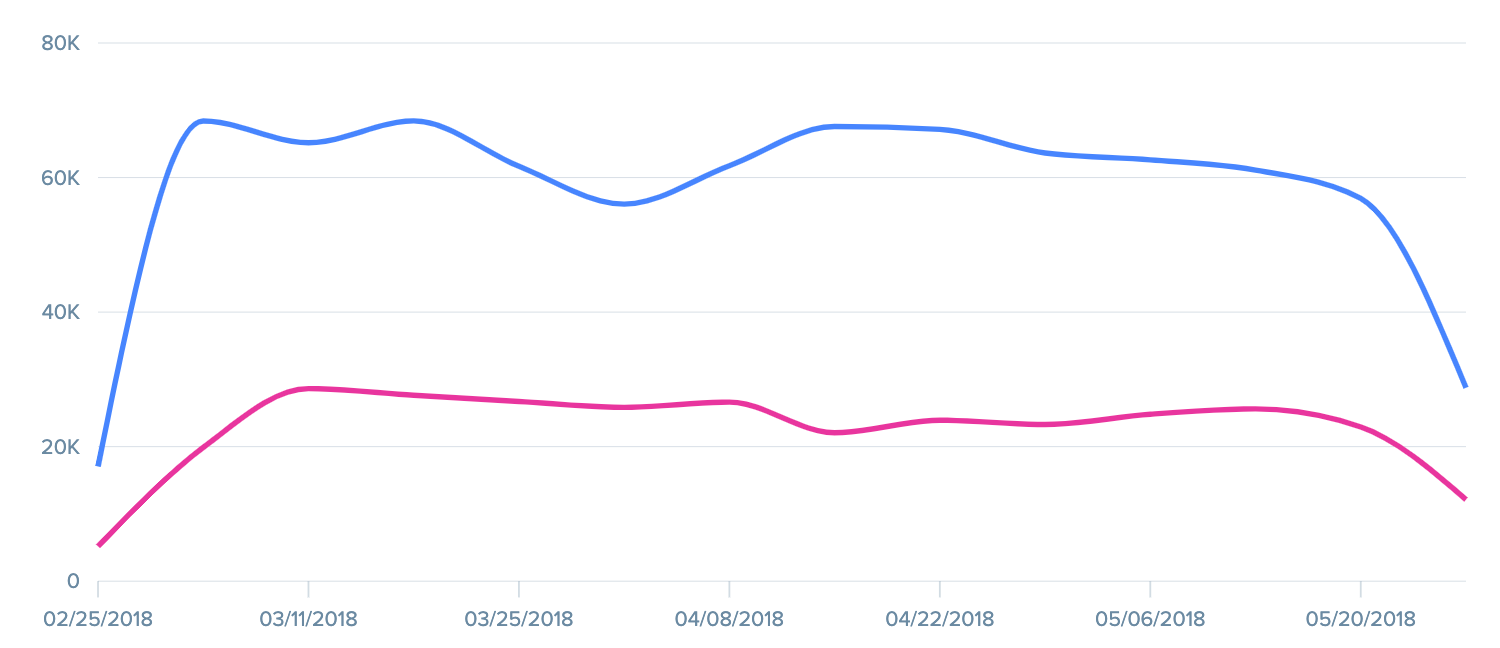 Woopra analytics trends
Woopra analytics trends
Based on your findings, you could predict with a high amount of accuracy what engagement would likely look like if you had another product release later on down the road.
If the engagement level isn’t where you want it to be, you could then strategize ways to increase it to maximize the impact of subsequent product releases.
Or if you wanted to know what subscription MRR growth was by vertical over time, you could track that to see which verticals your audience is most receptive to.
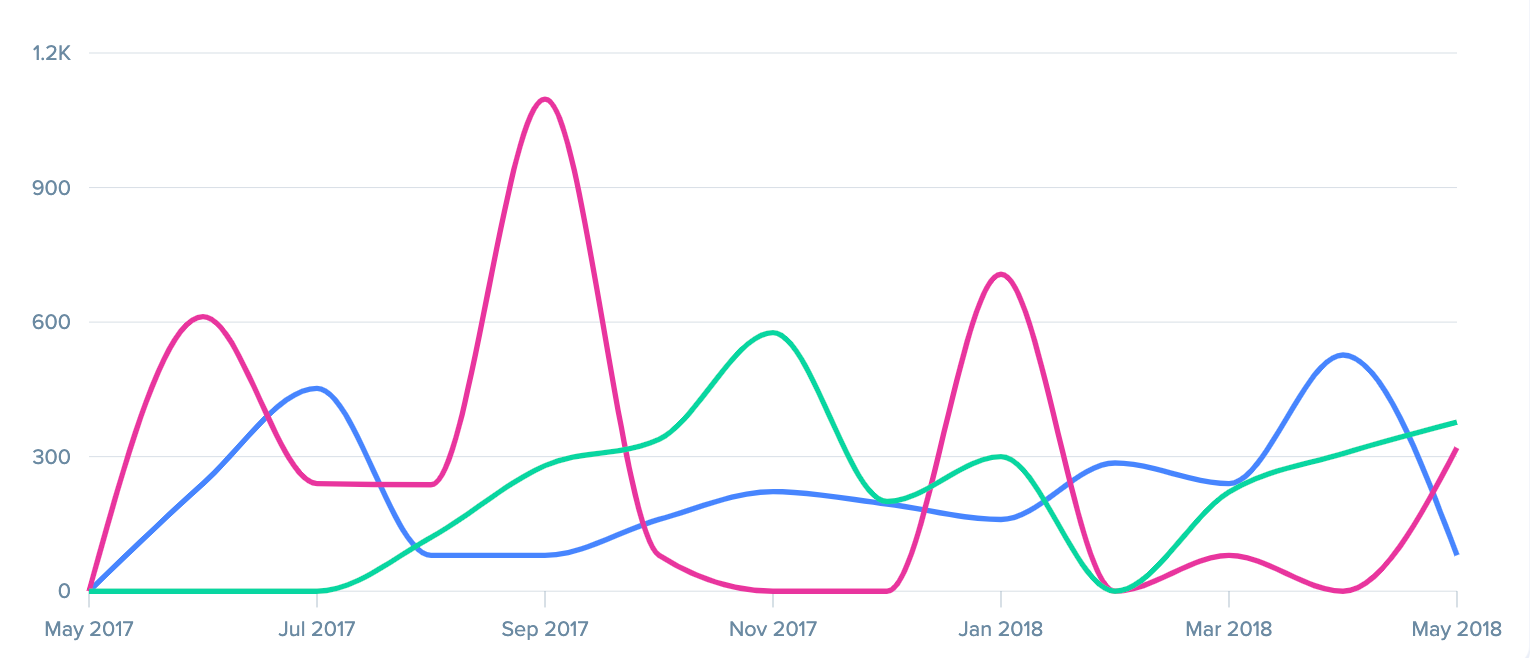
This could, in turn, guide your future decision-making to ensure you focus on the right verticals to raise customer satisfaction while also boosting profitability.
7. Measure Customer Retention
While analyzing the steps in the customer journey leading up to a purchase is incredibly important, it’s also critical that you measure what happens post-purchase — especially customer churn/retention.
A certain amount of churn is inevitable and part of the customer lifecycle. But if it gets out of hand, it can lead to a host of problems like revenue loss, lower profitability, decreased customer satisfaction, and reduced brand loyalty.
Further, it can indicate problems with your marketing strategy, sales funnel, onboarding, customer service, and the product itself.
By staying on top of customer retention, however, you can usually spot small issues before they become larger and also capitalize on opportunities.
One example of measuring customer retention is tracking the number of mobile logins over a period of time. Here’s an example.
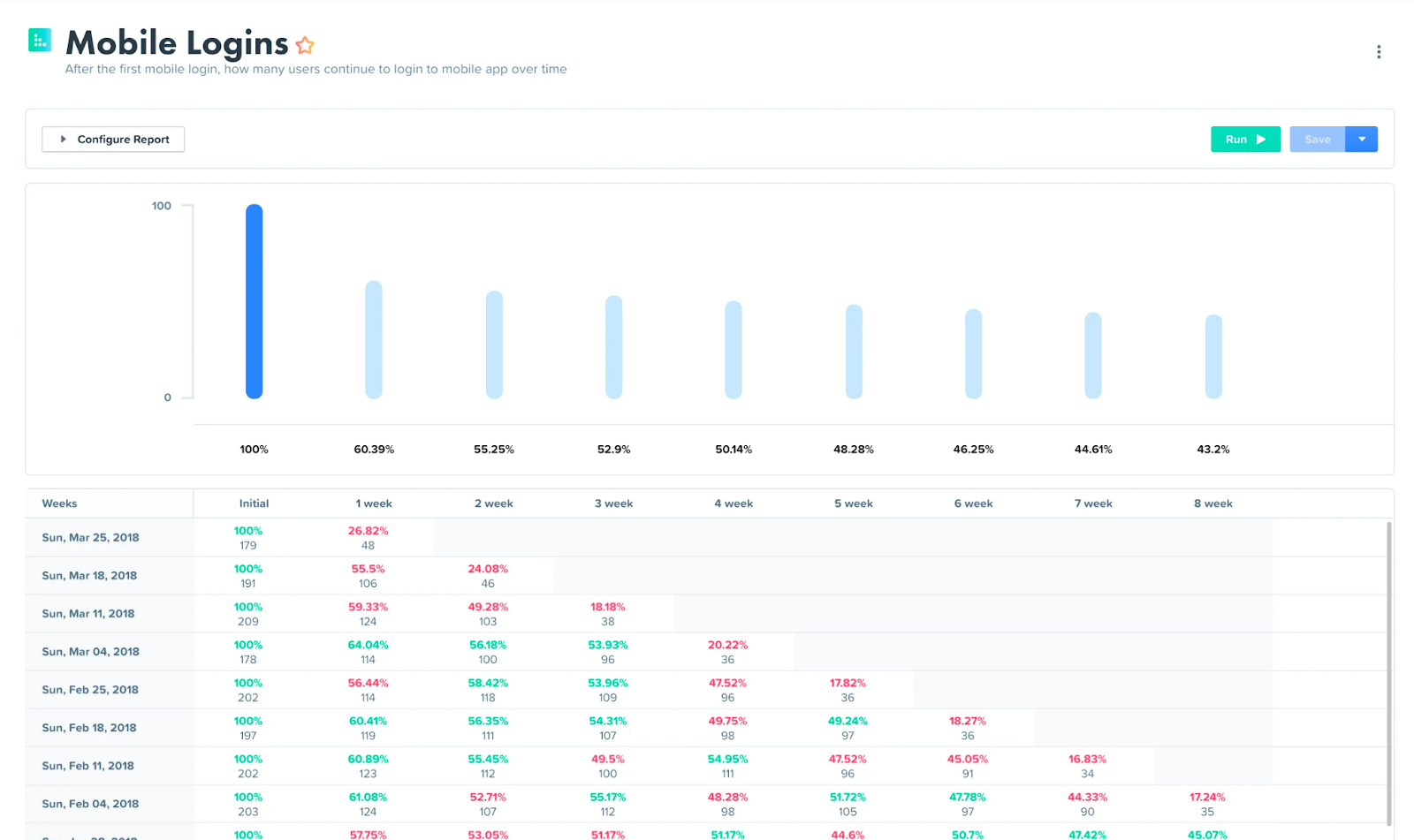
Another is to analyze engagement and churn.

Or, you can zero in on specific areas, such as what percentage of users come back after making an in-app purchase.
 Source: Woopra
Source: Woopra
There are many directions you can go, and all should help you keep churn from getting out of control while also improving the overall customer experience.
Covering All the Bases with Customer Analysis
Again, one of the most critical components of finding customer success is first understanding your customer base.
You want to know their needs, behaviors, tendencies, preferences, pain points, and more.
The most direct route to accomplishing this is by using customer analysis, as it allows you to efficiently gather the information needed to ensure data-driven decision-making.
It’s just a matter of 1) using the right tools and resources to gather your data and 2) applying customer insight to address issues and capitalizing on opportunities.
And while it usually takes some time to iron out all the kinks, the incremental progress should add up over time.



